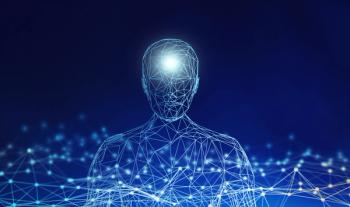
Research in the Time of COVID-19: Virtual and Digital Technology in Studies of Early Psychosis
The use of technology that supports remote methods of communication, assessment, and mental health care has become more timely, and important for researchers to adopt, refine, and implement.
Telepsychiatry and digital technologies have been touted for over a decade as effective methods for providing care to individuals with serious mental illness, particularly those in rural areas and for whom brick-and-mortar mental health services are not accessible.1 Up until the (very) recent past, health systems and providers were slow to embrace broader use of digital health tools due to legal and regulatory concerns over privacy, confidentiality, and logistical barriers.2 However, the emergence of
Virtual and mobile device-based methodologies are particularly suited to early psychosis research due to the age range of participants, namely adolescence and early adulthood. As “digital natives,” they are oriented to and well-versed in these modes of communication. Many of our clinical and research programs have been developing, using, and testing digital tools for some time. Here, we review currently available methods, based on our experience, that can be used to adapt and jumpstart early psychosis research as the field prepares for the new landscape that we will face, likely through 2021 and beyond.
Remote clinical assessment
The move to telehealth platforms like Zoom, Doxy.me, and MyChart video visits has enabled remote clinical assessment in new and exciting ways. Research participants can be recruited widely via Facebook or other online platforms, complete online screenings, and participate in clinical assessments remotely. Individuals who might not participate otherwise may prefer remote options, such as those without access to transportation or those who live in rural areas as well as patients with significant negative symptoms or anxiety.
Telehealth allows research participation at more convenient times and locations for the individual. Although some nonverbal cues may be missed, appropriate camera placement can help raters assess for movement abnormalities or other nuanced issues. Remote assessment requires appropriate equipment and a stable internet connection for both research staff and the participant, as well as steps to ensure privacy and confidentiality such as a private space for the interview. With specific training in conducting remote assessments, the benefits can outweigh the challenges.
Digital technologies can to collect data actively (eg, a person answers questions pushed to their smartphone) or passively (eg, number of text messages sent in a 24-hour period). These methods enable the creation of an individual-level dynamic trajectory for research participants that can be modeled on their own or in conjunction with other clinical, cognitive, and biomarker data.
Digital technology in clinical research is a rapidly evolving field with many competing user platforms, sensors, and data types introduced regularly. Therefore, platform selection should continually consider and assess flexibility, robustness, data integrity, and data security.
Digital platforms for research
We reviewed a wide variety of platforms for our research and identified two as examples that seem to be particularly geared towards clinical research. Pear Therapeutics has developed the only prescription digital therapeutic and digital diagnostic platform, to date, that has received FDA Market Authorization to treat neuropsychiatric disease and deliver regular patient-facing assessments, such as
Mobi by Safari Health, Inc, allows active HIPAA-compliant data collection from user smartphones on Android and Apple devices.3,4 Mobi provides individual assessment with flexible timeframes (eg, daily, weekly) using brief (≤10 questions) surveys that are pushed to the individual’s smartphone and are optimized for patient engagement and clinical validity. Mobi allows user customization of survey questions at the individual or group level for flexibility. Data are visualized on an encrypted dashboard, designed for clinical or research monitoring, and data files can be easily downloaded for analysis. Flags indicate critical responses warranting immediate follow-up (eg, suicidal ideation). Such digital platforms can easily implement ecological momentary assessments that avoid memory bias and provide rich, in-depth data as well as passive data such as call and text utilization parameters, accelerometry, geolocation, heart rate variability or sleep architecture.
The measurement of cognition is another area for which digital technologies are becoming available. Although cognitive deficits are core features of psychotic disorders, accounting for a substantial portion of disability, there are no approved treatments to date despite over two decades of active efforts to develop them.5 Therefore, measuring cognition is a core aspect of clinical research phenotyping that can provide new insights into the underpinnings of
In the era of big data analytics, major platforms for large scale cognitive testing have been developed (eg, Amazon mechanical TURK) that are essentially crowdsourcing applications that enable the collection of a wide range of data including behavioral, cognitive, and individual difference measures. These platforms are optimized for scale rather than precision and may not be well-suited for targeted phenotypic measurement in smaller, well-characterized clinical samples. However, these approaches provide a paradigm that can be further refined and adapted for clinical research.
More recent development includes tools such as Eprime Go, a version of a widely used software package for constructing and administering cognitive tasks for research.6 This version converts software running on a laboratory computer and shares it with individual participants to run on their home computer.
TestMyBrain.org provides the opportunity to collect large samples of cognitive data via online and mobile device testing. TMB has the ability to collect high quality data, particularly in areas of cognition and perception, that is comparable to what is collected in typical laboratory settings.7-11 These approaches offer a new tactic for conducting early psychosis research remotely.
Remotely collected biomarkers
Rapidly advancing technology allows us to envision a not-so-distant future in which translational psychiatry researchers can use a suite of remotely collected biomarkers in their research. Currently available tests for pregnancy and urine toxicology can easily be implemented at home. Major firms such as Apple and Google have invested in health applications of remote technology for broad medical applications, including EKG tracing, pulse oximetry, glucometry, and others. Some of these can be informative for psychiatry as well, such as heart rate variability, which is abnormal in many psychiatric disorders.
Others that are not included in general medical panels can be equally useful in our field, eg, saliva cortisol testing, skin conductance responses, pupil diameter, and drug use tests. Finally, improvements in actigraphy research may lead to detection of relevant behavioral signatures such as smoking a cigarette, brushing one’s teeth, and others. We expect that the current situation will further stimulate research and development into remote biomarker collection, potentially providing important information not currently available even in laboratory-based research.
Brain-based assessments
Although brain-based assessments are less mobile than the domains described above, there have been recent advances. Mobile EEG devices are already in commercial use for biofeedback and other indications. Some of these devices use a band worn on the forehead while others use a bonnet worn over the head (
Mobile MRI scanners are currently available and applied in special circumstances.12 With proper sanitization and other precautions, these may be a potential alternative to hospital- or university-based stationary MRI scanners that may be perceived by research participants as incurring a greater risk of COVID-19 infection.
Multi-site upscaling
Online methods are already well suited to support efficient and consistent cross-site collaboration in training, study implementation, and fidelity maintenance, particularly for international collaborations where travel is challenging-a reality in the “new normal.” Online methods for disseminating evidence-based practices can be similarly used to scale up to a large number of research sites. Online training modules are useful in promoting knowledge and coupling such tools with multi-dimensional, multi-site training and supervision using telehealth methods that can deliver enhanced adherence and sustained fidelity.13,14
Disclosures:
Dr Loewy is Associate Professor, UCSF Department of Psychiatry; Dr Ongur is Chief, Center of Excellence in Psychotic Disorders, McLean Hospital and the William P. and Henry B. Test Professor of Psychiatry at Harvard Medical School; Dr Niendam is Associate Professor, Department of Psychiatry and Behavioral Sciences, UC Davis Health; Dr Meyer-Kalos is Assistant Professor, Department of Psychiatry, University of Minnesota Medical School; Dr Vinogradov is Professor and Head, Department of Psychiatry, University of Minnesota Medical School; Dr Girgis is Associate Professor, Clinical Psychiatry, Columbia University College of Physicians and Surgeons and New York State Psychiatric Institute. Drs Loewy, Ongur, Vinogradov, and Girgis report no conflicts on interest concerning the subject matter of this article; Dr Niendam reports that she is a co-founder and shareholder of Mobi; Dr Mayer-Kalos reports that she is an independent consultant for NAVIGATE training for first episode psychosis.
Acknowledgement-The authors would like to thank Dr Jeffrey Leiberman for his very helpful comments on an earlier version of the manuscript for this article.
References:
1. O’Reilly R, Bishop J, Maddox K, et al. Is telepsychiatry equivalent to face-to-face psychiatry? Results from a randomized controlled equivalence trial. Psychiat Serv. 2007;58:836-843.
2. Lal S, Abdel-Baki A, Sujanani S, et al. Perspectives of young adults on receiving telepsychiatry services in an urban early intervention program for first-episode psychosis: a cross-sectional, descriptive survey study. Front Psychiatry. 2020;11:117.
3. Kumar D, Tully LM, Iosif AM, et al. A mobile health platform for clinical monitoring in early psychosis: implementation in community-based outpatient early psychosis care. JMIR Ment Health. 2018;5:e15.
4. Niendam TA, Tully LM, Iosif A-M, et al. Enhancing early psychosis treatment using smartphone technology: a longitudinal feasibility and validity study. J Psychiat Res. 2018;96:239-246.
5. Lesh T, Niendam T, Minzenberg M, Carter C. Cognitive control deficits in schizophrenia: mechanisms and meaning. Neuropsychopharmacol. 2011;36:316-38.
6. Whitfield S.
7. Fortenbaugh FC, DeGutis J, Germine L, et al. Sustained attention across the life span in a sample of 10,000: dissociating ability and strategy. Psychol Sci. 2015;26:1497-1510.
8. Hartshorne JK, Germine LT. When does cognitive functioning peak? The asynchronous rise and fall of different cognitive abilities across the life span. Psychol Sci. 2015;26:433?443.
9. Wilmer J, Germine L, Chabris C, et al. Capturing specific abilities as a window into human individuality: the example of face recognition. Cog Neuropsychol. 2012;29:360-392.
10. Germine L, Nakayama K, Duchaine BC, et al. Is the web as good as the lab? Comparable performance from web and lab in cognitive/perceptual experiments. Psychonom Bull Rev. 2012;19:847-857.
11. Halberda J, Ly R, Wilmer JB, et al. Number sense across the lifespan as revealed by a massive Internet-based sample. Proc Natl Acad Sci. 2012;109:11116-11120.
12. Vincent GM, Cope LM, King J, et al. Callous-unemotional traits modulate brain drug craving response in high-risk young offenders. J Abnorm Child Psychol. 2018;46:993-1009.
13. Dixon L, Patel S. The application of implementation science to community mental health. World Psychiatry. (In press).
14. Covell N, Margolies P, Myers R, et al. State mental health policy: scaling up evidence-based behavioral health care practices in New York state. Psychiat Serv. 2014;65:713-715.
Newsletter
Receive trusted psychiatric news, expert analysis, and clinical insights — subscribe today to support your practice and your patients.

















